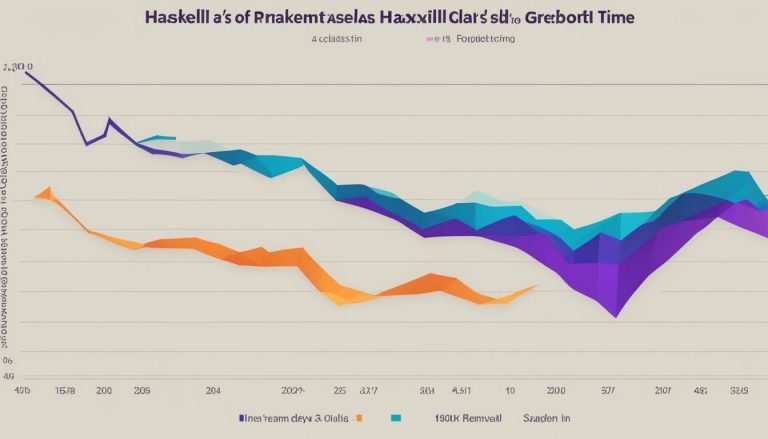Greetings! In today’s article, I’ll be diving into the world of Docker and shedding light on the concept of Docker Nodes. So, what exactly is a Docker Node? Let me break it down for you.
A Docker Node is a software development platform that allows you to build, ship, and run applications in a contained environment. It simplifies the process of packaging an application with all its dependencies into a standardized unit for software development. Whether you’re a developer, system administrator, or simply someone looking to streamline your application development process, Docker Nodes can be a game-changer.
The Docker architecture comprises several components, including the Docker client, Docker host, and Docker registry. These components work together seamlessly, enabling you to develop, package, and deploy applications using Docker containers. This makes it incredibly easy to build and run applications in a variety of environments.
Key Takeaways:
- A Docker Node is a software development platform for building, shipping, and running applications.
- It allows you to package an application with its dependencies into a standardized unit.
- Docker Nodes are used by developers, system administrators, and anyone looking to streamline their application development process.
- The Docker architecture consists of the Docker client, Docker host, and Docker registry.
- Using Docker containers simplifies the process of building and running applications in various environments.
Now that we have demystified Docker Nodes, stay tuned for the rest of the article where we’ll explore the fascinating aspects of Docker’s image and container lifecycles, data volumes, networking capabilities, and more. Docker truly revolutionizes the way we develop and deploy applications, and it’s essential knowledge for anyone in the tech world.
The Image Lifecycle in Docker
In Docker, the image lifecycle consists of several essential steps that allow you to create, build, and manage Docker images for your applications. Understanding this lifecycle is crucial for efficiently working with Docker. Let’s dive into each step in more detail:
Dockerfile:
The Dockerfile is a text file that contains instructions for building a Docker image. It defines the base image, sets the working directory, copies files into the image, installs dependencies, exposes ports, and configures environment variables. The Dockerfile serves as a blueprint for creating an image with all the necessary components to run your application.
docker build:
Once the Dockerfile is ready, you can use the “docker build” command to build the Docker image. This command reads the instructions from the Dockerfile and executes them, layer by layer, to create the final image. The build process can include downloading dependencies, running scripts, and setting up the environment as defined in the Dockerfile.
docker push and docker pull:
After the image is built, you can push it to a Docker registry using the “docker push” command. A Docker registry is a centralized repository for storing and distributing Docker images. It allows you to share your images with others and deploy them to different environments. Conversely, you can pull images from a registry to your local machine using the “docker pull” command.
docker run:
Once you have a Docker image, you can create a container from it using the “docker run” command. This command starts a new container based on the specified image. You can provide additional configuration options, such as port mapping, environment variables, and volume mounts, to customize the container’s behavior.
The image lifecycle in Docker is a fundamental aspect of working with containers. By understanding how Dockerfiles, image building, pushing, pulling, and container creation work, you can effectively manage your application’s images and ensure smooth deployment across different environments.
Docker Container Lifecycle
In Docker, the container lifecycle revolves around three key commands: docker run, docker exec, and docker commit. Let’s explore each stage in detail:
Starting a Container
To begin the container lifecycle, we use the docker run command. This command creates a new container instance from an existing Docker image. The container is isolated and runs independently, with its own filesystem, processes, and networking. The docker run command allows us to specify various parameters, such as environment variables, port mappings, and volume mounts, to customize the container’s behavior. By utilizing the docker run command, we can start multiple containers from the same image, each with its unique configuration and settings.
Making Changes to a Running Container
Once a container is running, we may need to make modifications or perform administrative tasks inside it. The docker exec command allows us to execute commands within a running container. It provides a way to access the container’s shell and perform actions such as installing additional software, modifying configurations, or interacting with the running application. By utilizing the docker exec command, we can ensure that our container remains up-to-date and operational throughout its lifecycle.
Creating a New Image
After making changes to a running container, we can capture those changes and create a new Docker image using the docker commit command. This command takes a snapshot of the container’s filesystem and configuration, transforming it into a new image that can be used to create future containers with the updated state. By leveraging the docker commit command, we can effectively version control our container configurations and share them with others.
| Command | Description |
|---|---|
| docker run | Starts a new container from an existing Docker image |
| docker exec | Executes commands within a running container |
| docker commit | Creates a new Docker image from a running container |
The container lifecycle in Docker allows for flexibility and agility in managing and maintaining our application environments. By understanding the various stages and commands involved, we can effectively develop, deploy, and update our containers with ease.
Docker Data Volumes: Efficiently Sharing Data in Docker
When working with Docker, efficiently sharing data between containers or between a container and the host is crucial. Docker provides a powerful feature called data volumes that enables seamless data sharing and persistence. In this section, we will explore how to create and manage data volumes using Docker CLI commands.
Creating and Listing Data Volumes
To create a data volume in Docker, you can use the docker volume create command. This command allows you to specify a name for the volume and create it with a single line of code. Once the volume is created, you can list all the available volumes using the docker volume ls command. This provides an overview of the existing volumes and their associated details, such as the volume name and driver.
Implementing Data Volumes in Containers
Using data volumes in containers is straightforward. When running a container, you can mount a data volume to a specific directory inside the container using the -v option with the docker run command. This enables the container to access and modify data stored in the volume. By leveraging data volumes, you can easily share and persist data even when containers are stopped or restarted.
With data volumes, you can avoid data loss and ensure that your data is readily available whenever needed. Whether you need to share data between multiple containers or store data externally to the host, data volumes provide a reliable and efficient solution. By utilizing the power of Docker data volumes, you can streamline your development and deployment workflows while maintaining data integrity and accessibility.
Docker Networking: Connecting Containers Seamlessly
Networking is an essential aspect of Docker, enabling seamless communication between containers and the outside world. With Docker, you have the flexibility to choose from various network options, including Bridge, Host, Overlay, Macvlan, and third-party network plugins, allowing you to tailor your networking setup to your specific needs.
The Bridge network is the default network type in Docker, providing a private network for containers running on the same host. Containers connected to a Bridge network can communicate with each other using IP addresses. This network type is ideal for applications that require standalone environments or microservices architecture.
Host networking allows containers to share the host’s networking stack, utilizing the host’s IP address and port space directly. This option eliminates network isolation between containers and the host, making it suitable for high-performance applications that require low-latency communication or access to specific host resources.
The Overlay network facilitates communication between containers distributed across multiple hosts in a cluster. This network type is useful for building distributed applications and enables containers to communicate seamlessly, irrespective of their physical location. Docker’s built-in swarm mode allows you to easily manage and scale your Overlay networks.
Table: Docker Networking Commands
| Command | Description |
|---|---|
docker network create |
Create a new Docker network |
docker network ls |
List available Docker networks |
docker network inspect |
View details of a Docker network |
docker network connect |
Connect a container to a Docker network |
docker network disconnect |
Disconnect a container from a Docker network |
These commands enable you to create, manage, and connect containers to different networks, providing you with full control over your Docker networking environment.
By leveraging Docker’s networking capabilities, you can design and deploy applications with ease, ensuring seamless communication between containers and external resources. Whether you need isolation, direct host access, or distributed communication, Docker offers a range of networking options to suit your requirements.
Conclusion
In conclusion, Docker is a revolutionary technology that offers numerous benefits for developers and system administrators. By leveraging Docker containers, applications can be packaged along with their dependencies, resulting in improved resource utilization and portability. The ease of deployment that Docker provides is unmatched, making it a valuable tool for modern application development and deployment.
The adoption of Docker has been widespread, with renowned companies like Google, Facebook, Netflix, and Salesforce embracing the technology. They have recognized the value of streamlining their application development process and enhancing resource efficiency through Docker. As more and more organizations realize the advantages of Docker, its adoption is expected to continue growing.
With an understanding of the Docker architecture, image and container lifecycles, data volumes, and networking capabilities, developers and system administrators can unlock the full potential of this powerful technology. Docker enables them to build and run applications in a variety of environments, providing flexibility and scalability.
In summary, Docker is a game-changer in the world of software development. Its benefits, including improved resource utilization, portability, and ease of deployment, make it a valuable asset for any organization. As Docker continues to evolve and innovate, it remains at the forefront of modern application development and deployment.
FAQ
What is a Docker Node?
A Docker Node is a software development platform that allows you to build, ship, and run applications in a contained environment. It provides a way to package an application with all its dependencies into a standardized unit for software development.
What is the Docker Image Lifecycle?
The Docker Image Lifecycle consists of several steps. First, you create an image using a Dockerfile, which specifies the application and its dependencies. Once the Dockerfile is created, you can use the “docker build” command to build an image from it. After the image is built, you can push it to a registry using the “docker push” command and pull it from a registry using the “docker pull” command. Finally, you can create a container from the image using the “docker run” command.
What is the Docker Container Lifecycle?
The Docker Container Lifecycle includes several stages. First, you start a container from an image using the “docker run” command. Once the container is running, you can make changes to it using the “docker exec” command. After making changes, you can save the container as a new image using the “docker commit” command.
How do I share data volumes in Docker?
Data volumes are created using the “docker volume create” command and can be listed using the “docker volume ls” command. Volumes can be mounted to containers using the “-v” option with the “docker run” command.
What are the networking capabilities in Docker?
Docker supports several types of networks, including the Bridge network, Host network, Overlay network, Macvlan network, and third-party network plugins. You can create and manage networks using the Docker CLI or Docker Compose.
What are the benefits of using Docker?
Docker simplifies the development, packaging, and deployment of applications. It offers improved resource utilization, portability, and ease of deployment. Docker has gained widespread adoption, with companies like Google, Facebook, Netflix, and Salesforce using it to streamline their application development process and improve resource efficiency.
Hi, I’m Mark, the author of Clever IT Solutions: Mastering Technology for Success. I am passionate about empowering individuals to navigate the ever-changing world of information technology. With years of experience in the industry, I have honed my skills and knowledge to share with you. At Clever IT Solutions, we are dedicated to teaching you how to tackle any IT challenge, helping you stay ahead in today’s digital world. From troubleshooting common issues to mastering complex technologies, I am here to guide you every step of the way. Join me on this journey as we unlock the secrets to IT success.


